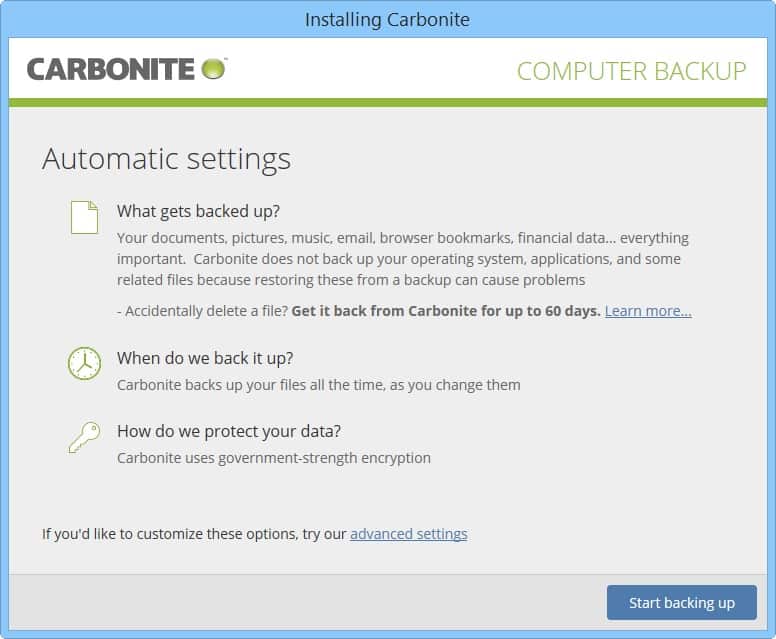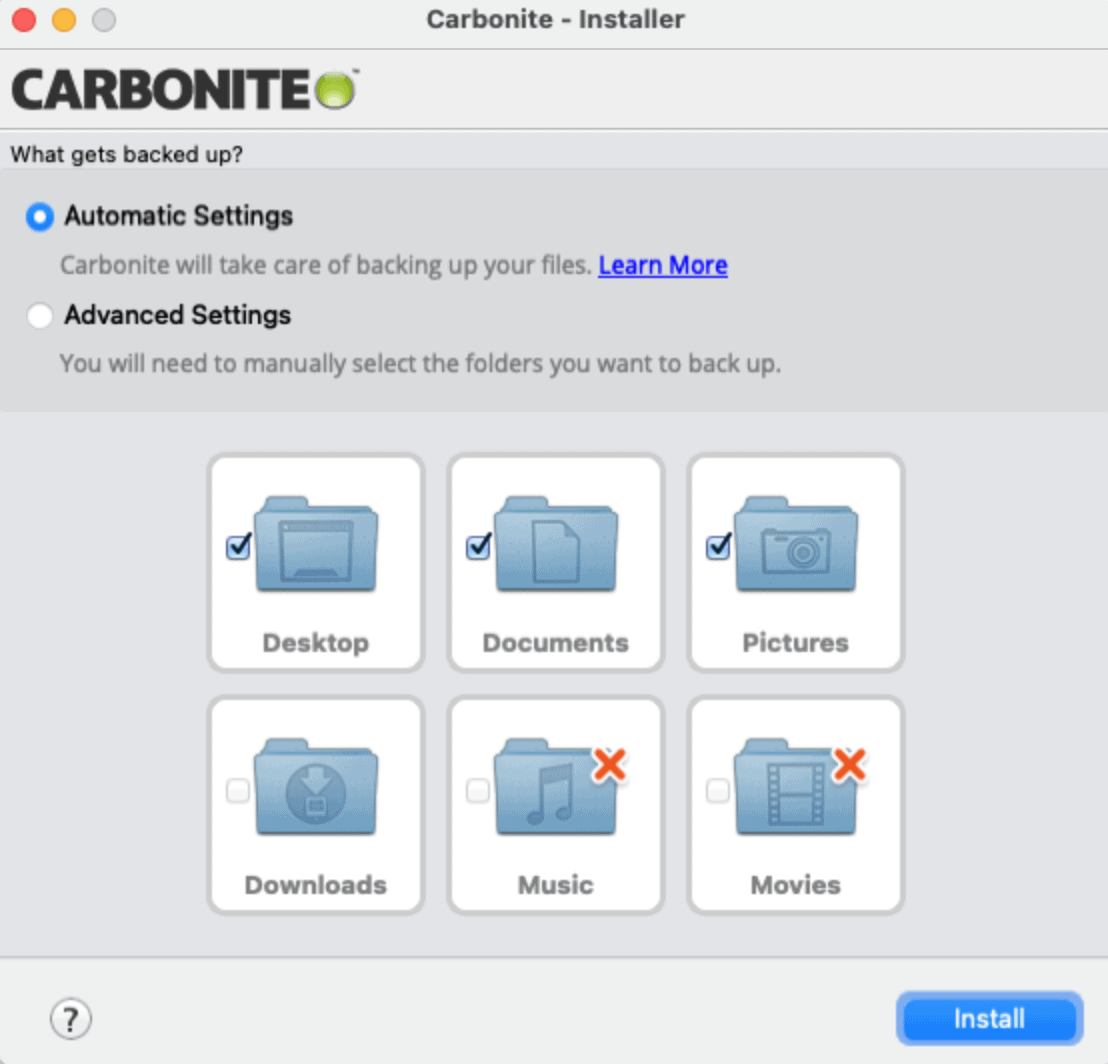
- Carbonite storage how to#
- Carbonite storage update#
- Carbonite storage android#
- Carbonite storage pro#
- Carbonite storage code#
Out of the box support for a Bus (e.g.
Carbonite storage code#
Carbonite storage pro#
For StorageLruCache you can provide your own Serializer using StorageLruCache.Options. Alternatively, Carbonite Safe Backup Pro plans allow unlimited computers with limited storage. Carbonite® Server is a secure, all-in-one server backup and recovery solution for physical, virtual and legacy systems.You can provide your own using a CacheFactory or providing CacheOptions on build time.Add more cache (in memory/storage TTL, references, etc.) and serialization (JSON, Java Serialization, etc.) implementations.
Carbonite storage update#
Carbonite storage android#
To include carbonite in your Android project you can do it so in your dependecies:Īt this point only SNAPSHOT versions are available.įuture future = carbonite.
Carbonite storage how to#
TODO provide docs regarding current implementations and how to use them, etc. You can specify how and how longĪre them kept, for finer control you can provide your own implementations.Ĭurrent implementations vary, all of them are stale values prone if you do not use them properly. Later either from memory or loading them asynchronously/synchronously from storage. Note: Carbonite is currently under first version development so API and stuff might change among versions.Ĭarbonite keeps your POJOs in memory while transparently persisting them in background to storage, you can retrieve them Its Safe product line offers backups for desktops, laptops, and servers, including remote file access.


You should evaluate when traditional persistence solutions make more sense based on your problem. Carbonite is a well-known name among business cloud backup solutions. for data that you already hold in Objects anyways, plus you want them evicted at some point therefore losing them is not really a big deal, yet you can control how that will happen.Īlthough it can be used as the only persistence solution on Android, it is not one of carbonite goals to do so, Unfortunately, Backblaze still lacks a lot of features. ORMs, SQLite, Cursors, ContentProviders, etc. Like Carbonite, Backblaze offers unlimited cloud storage, but it has better download and upload speeds. If you need a specific recommendation for your use case, please contact us.A simple in memory and persistent Object cache for Android.Ĭarbonite aims to deal with your data POJOs (JavaBeans folks anyone?) without boilerplate code, so you can forget about Unlimited Cloud Storage Remote Sharing and Access Mirror Image Backup Video Backup Hard Drive Backup Automatic Cloud Backup Courier Recovery Hybrid. Many of these clients are listed at at /interop.

Backblaze, and Carbonite all offer courier services but charge. If you do need an end-user storage client to work with Wasabi, any storage client that works with S3 will generally also work with Wasabi. The affordable Personal plan gives you 5TB of storage space to back up as many devices as you wish, including mobile ones. Wasabi’s approach to end-user client applications is essentially the same as Amazon S3: build a strong partner ecosystem and let the customer decide which client application works best for their needs. This 'bring your own app or client' model is in contrast to services like Carbonite, CrashPlan, Dropbox, and Google Drive (which will generally include storage client applications for end-user platforms such as Windows, Mac, iOS, Android, etc.). YourPojo stored carbonite.storage(data, YourPojo.class). Wasabi is a public cloud object storage service in the same class as the following public cloud services:Īlthough Wasabi and all three of the major public cloud object storage service providers provide basic browser-based management consoles for file uploads/downloads, the dominant model is for customer to provide their own storage apps for use with these services. GitHub - eveliotc/carbonite: A simple in memory and persistent Object cache for Android.


 0 kommentar(er)
0 kommentar(er)
